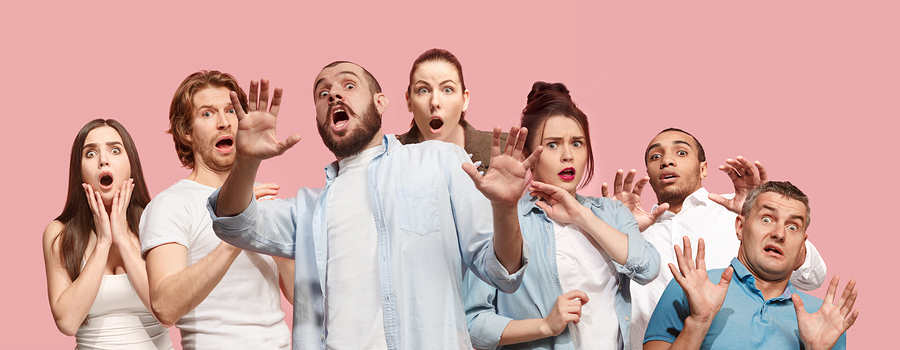I’ve been writing about balanced living these last few months. But a recent phenomenon known as The Momo Challenge illustrates the importance of balanced thinking. That is, you have to balance what you think is happening from what is really happening.
The Momo Challenge: How Fear Perpetuates Anxiety
The Momo Challenge started blowing up across major news outlets and social media apps a couple of weeks ago, but it’s been around since 2018. Momo is a figure/statue created by artist Keisuke Aisawa for a Japanese special-effects company.
According to media reports last week, Momo suddenly appears in the middle of Peppa Pig or Fortnite videos on YouTube and asks children to commit violent acts against themselves or another family member.
It’s pretty scary when you think about it. But the truth is, nothing ‘bad’ has actually happened. There aren’t any reported cases of children doing anything threatening because of Momo, and it seems that parents, not children, are the ones most concerned.
So, how did this paranoia spread so quickly? It’s a sociological phenomenon called moral panic, and it’s been around for decades.
Moral Panic
Moral panic is essentially the phenomenon that happens when our fear dramatically exceeds what is likely to happen. It’s the fear that some evil force, person, or socially constructed problem will destroy or harm society. A moral panic can appear to be real and severe because it highlights the helplessness that people feel regarding something they have no control over.
In this instance, The Momo Challenge highlights the helplessness that parents feel when their children are online.
Examples of Moral Panic
Every generation has a “Momo Challenge” or moral panic. Here are a few examples that came to my mind.
- Beatles and Satanic messages. When the Beatles were at the height of fame, the rumour was that if you played one of their records backward, you could hear Satanic words. This moral panic preyed on parents’ concerns that rock ’n roll was destroying the minds of young people.
- Dungeons and Dragons. I remember my grade-eight teacher telling the class about the dangers of playing the Dungeons and Dragons board game. The game makes references to the occult, witchcraft, and demons — a definite no-no for students in Catholic or religious-based schools like myself.
- Y2K. Wasn’t the world supposed to end when the date on your computer read 2000? I remember viewing news clips of supermarkets running out of beans, rice, and water. Why? Because millions of people believed a computer glitch would wreak havoc in society, forcing us to hide in bunkers and live off non-perishable goods. This moral panic preyed on our ignorance of computers, and the reality that computers pretty much run everything.
- Vaccines cause autism (or another health problem). In my opinion, this is probably one of the most damaging examples of moral panic at the moment. The reality is that there are no known reported cases of people developing autism from vaccines. Still, the fear that some people have about vaccinations causing long-term health problems leads people to adopt dysfunctional beliefs about health and vaccines.
Nowadays, it’s easier to confuse fact and fiction, and it’s only going to get harder (think virtual reality). But when it comes to the Momo Challenge, most kids know it’s a hoax.
Click here to hear my radio interview with CHML 900 on The Momo Challenge
If you liked this post, then you’ll enjoy receiving my updates. I typically share tips and strategies on how to live a more balanced life. In return for subscribing, you’ll receive my free ebooklet on “The Promise Wheel: A New And Easy Way To A Balanced Life.” You can sign up by scrolling to the bottom of this page.
Thank You!!

